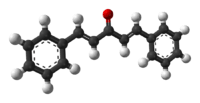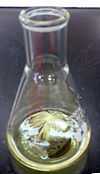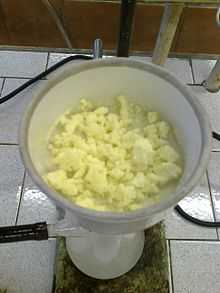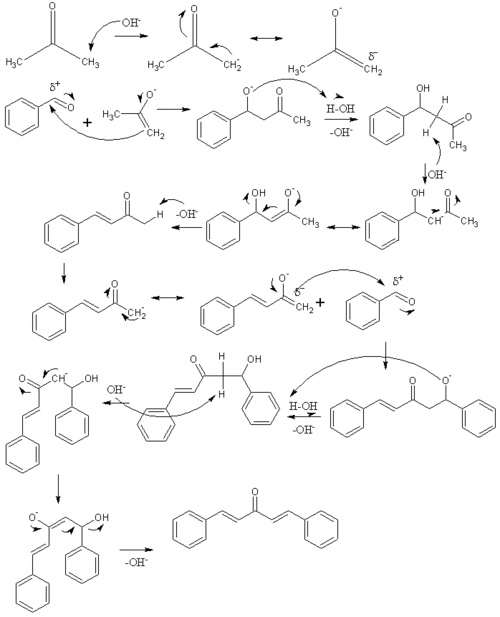Dibenzylideneacetone
 | |
 | |
 | |
| Names | |
|---|---|
| IUPAC name
(1E,4E)-1,5-diphenylpenta-1,4-dien-3-one | |
| Other names
Dibenzalacetone | |
| Identifiers | |
| 538-58-9 | |
| ChemSpider | 1266463 |
| |
| Jmol-3D images | Image Image |
| PubChem | 1549622 |
| |
| Properties | |
| C17H14O | |
| Molar mass | 234.29 g/mol |
| Appearance | Yellow solid |
| Melting point | *Aldrich 110-111 °C (trans,trans isomer)
|
| Boiling point | 130 °C (266 °F; 403 K) (cis,cis isomer) *Merck |
| Insoluble | |
| Hazards | |
| Main hazards | Irritant |
| Except where noted otherwise, data is given for materials in their standard state (at 25 °C (77 °F), 100 kPa) | |
| | |
| Infobox references | |

Dibenzylideneacetone or dibenzalacetone, often abbreviated dba, is an organic compound with the formula C17H14O. It is a bright-yellow solid insoluble in water, but soluble in ethanol. Dibenzylideneacetone is used as a sunscreen component and as a ligand in organometallic chemistry, for instance in tris(dibenzylideneacetone)dipalladium(0). In this case, it is a labile ligand that is easily displaced by stronger ligands like triphenylphosphine, hence it serves a useful entry point into palladium(0) chemistry.
Preparation
The compound can be prepared in the laboratory by an aldol condensation of benzaldehyde and acetone with sodium hydroxide in a water/ethanol medium with the exclusive formation of the trans,trans isomer (melting point 110–111 °C).[1]
This reaction is frequently encountered in organic chemistry education as a laboratory procedure. The conversion proceeds via the intermediacy of benzylideneacetone.
Prolonged exposure to sunlight converts the compound in a [2+2] cycloaddition to a mixture of four cyclobutane isomers.[2]
References
- ↑ Conard, C. R.; Dolliver, M. A. (1943). "Dibenzalacetone". Org. Synth.; Coll. Vol. 2, p. 167
- ↑ Rao, G. N.; Janardhana, C.; Ramanathan, V.; Rajesh, T.; Kumar, P. H. (November 2006). "Photochemical Dimerization of Dibenzylideneacetone. A Convenient Exercise in [2+2] Cycloaddition Using Chemical Ionization Mass Spectrometry". J. Chem. Educ. 83 (11): 1667. doi:10.1021/ed083p1667.

